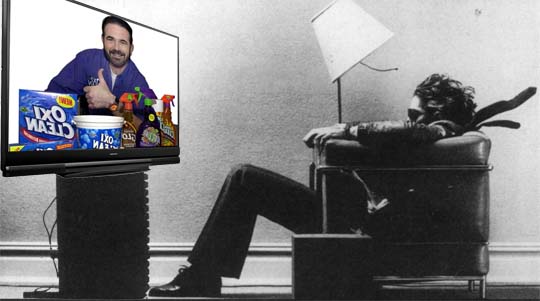FCC Provides Two Paths to CALM Compliance

WASHINGTON: Regulators provided two paths to compliance with the Commercial Advertising Loudness Mitigation Act this week. One relies on audio processing and the other involves a safe harbor in the absence of processing.
All cable operators and TV stations must comply with the rules set forth this week by the Federal Communications Commission regarding the CALM Act. (See “FCC Issues Rules to CALM TV Ads.”) The commission delineated the rules for distributors that use Dolby Digital AC-3 audio encoding, and for those that do not.
For those that use AC-3, compliance requires that dialnorm be encoded as metadata into the audio stream and transmitted to the home. Dialnorm--for dialog normalization--is the loudness metric established by the Advanced Television System Committee’s A/85 Recommended Practice, upon which the order is based.
“The ‘golden rule’ of the RP is that the dialnorm value must correctly identify the loudness of the content it accompanies in order to prevent excessive loudness variation during content transitions on a channel or when changing channels,” the order states. “If the dialnorm value is correctly encoded--if it matches the loudness of the content, which depends in turn on accurate loudness measurements--the consumer’s receiver will adjust the volume automatically to avoid spikes in loudness.”
A recent revision to A/85 provided for stations and cable operations not using the AC-3, and therefore unable to embed dialnorm metadata for receivers. In such cases, a processor is used with dialnorm set a fixed value for both locally inserted commercials and those embedded by the networks. Compliance for those distributors will consist of implementing and maintaining the processor and software.
The commission opted not to require real-time processing for embedded ads--around 95 percent of the total--because it would degrade audio quality. Stations and cable ops instead must obtain certification from networks that that they are applying dialnorm, and be able to pass it through to receivers. Most broadcast networks implemented dialnorm before the CALM Act was passed by Congress last year.
This certification is part of the “safe harbor” approach to compliance that the order says will provide “a simple way for stations and MVPDs to respond to an enforcement inquiry regarding embedded commercials so as to reduce their burden of demonstrating compliance without forcing them to use equipment that distorts the audio they transmit.”
Noncertified content must be subjected to annual spot checks for two years. The spot checks consist of monitoring 24 uninterrupted hours of programming with a loudness meter. In cases where all programmers can’t be monitored in a 24-hour period, the spot check can be conducted over seven days to achieve the 24-hour total. For the spot check to be valid, stations and operators must be able to demonstrate the accuracy of loudness meters.
Larger stations as defined by the Small Business Act--those generating more than $14 million in annual receipts--must check 100 percent of noncertified programming they carry, as must cable operations with more than 10 million subscribers. Cable operators with less than 10 million but more than 400,000 subscribers must annually spot check 50 percent of noncertified channels.
Cable operators will not have to spot check broadcast channels, since broadcasters will already have to do it themselves. Smaller entities “need not perform any annual spot checks to be in the safe harbor.” However, in the event of an FCC inquiry, they will have 30 days to obtain loudness measurement equipment and perform a spot check.
The order contains a one-year waiver for stations and cable operators that can demonstrate implementation would cause them financial hardship. The commission has discretion to extend the waiver for an additional year. Non-commercial stations are exempt except for commercial ads transmitted as part of ancillary or supplemental services.
The FCC said it would rely on consumer complaints “to bring any potential noncompliance to our attention.” Those complaints will have to be “specific in describing the commercials complained of, as well as identifying the station or [cable operator] and programming network on which the commercials appeared. As a general matter, non-specific complaints will not be actionable.” Complaints can be submitted electronically at the FCC’s complaint website, or via fax or by mail.
The rules go into effect Dec. 13, 2012.
~ Deborah D. McAdams
The professional video industry's #1 source for news, trends and product and tech information. Sign up below.
